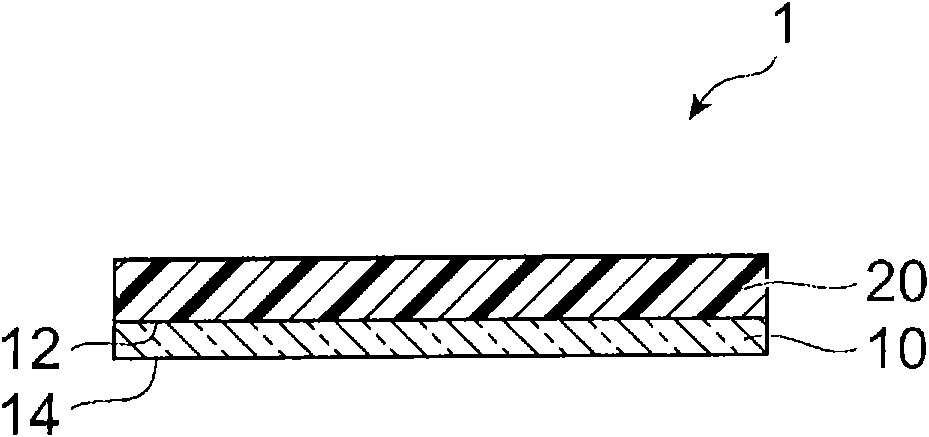Photosensitive element
A photosensitive, photosensitive resin technology, applied in electrical components, optics, optomechanical equipment, etc., can solve the problems of polluting optical tools, exposure of photosensitive layer, photosensitivity decline, etc., and achieve excellent resolution and excellent peeling effect
- Summary
- Abstract
- Description
- Claims
- Application Information
AI Technical Summary
Problems solved by technology
Method used
Image
Examples
Embodiment 1
[0137] As a supporting film, a polyethylene terephthalate (hereinafter referred to as "PET") film (manufactured by Toyobo Co., Ltd., trade name "A-1517", thickness 16 μm) was prepared. Next, the above-prepared photosensitive resin composition containing the binder polymer (I) was coated on the PET film to make the thickness uniform, and dried with a hot air convection dryer at 100° C. for 2 minutes to remove the solvent to form a photosensitive layer. After drying, the photosensitive layer was covered with a polyethylene film (manufactured by Tamapoly, trade name "NF-15", thickness 20 μm) as a protective film to obtain a photosensitive element. In addition, the thickness of the photosensitive layer after drying was 25 μm.
Embodiment 2
[0139] A photosensitive element was obtained in the same manner as in Example 1 except that the photosensitive resin composition containing the binder polymer (II) was used instead of the photosensitive resin composition containing the binder polymer (I). . The thickness of the photosensitive layer after drying was 25 μm.
PUM
| Property | Measurement | Unit |
|---|---|---|
| acid value | aaaaa | aaaaa |
| thickness | aaaaa | aaaaa |
| haze | aaaaa | aaaaa |
Abstract
Description
Claims
Application Information
 Login to View More
Login to View More - R&D
- Intellectual Property
- Life Sciences
- Materials
- Tech Scout
- Unparalleled Data Quality
- Higher Quality Content
- 60% Fewer Hallucinations
Browse by: Latest US Patents, China's latest patents, Technical Efficacy Thesaurus, Application Domain, Technology Topic, Popular Technical Reports.
© 2025 PatSnap. All rights reserved.Legal|Privacy policy|Modern Slavery Act Transparency Statement|Sitemap|About US| Contact US: help@patsnap.com



